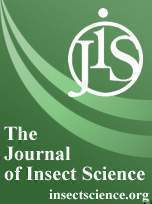The accessory glands in the genital tract of female Acheta domesticus L. (Orthoptera: Gryllidae) were investigated in detail. The glands are situated within the 7th and 8th abdominal segment and lead to the genital chamber lateral to the terminal papilla of the ductus receptaculi. The shape of the gland is characterized by a complex system of tubules, including numerous ramifications. The gland's size ranges from 2 to 4 mm. The epithelium is constructed according to a simple scheme and consists of a cuticular intima at the luminal side, one layer of gland cells, and a basallamina at the outermost side. The observed morphology of the accessory glands widely corresponds with that in other cricket species (e.g., Teleogryllus commodus). This is also true for the structure of a single gland cell, which can be subdivided into a basal part with nucleus and intracellular cisternae, as well as an apical part with all those compartments responsible for the production of the secretion. The secretion itself may be classified as lipophilic and is produced for the first time 4 to 6 days after the imaginai moult. Several endogenic functions of the secretion are discussed (lubricant for oviposition, support for introducing the tube of the spermatophore into the ductus receptaculi, etc.).
How to translate text using browser tools
1 August 2012
Morphology and Ultrastructure of the Accessory Glands in the Female Genital Tract of the House Cricket, Acheta domesticus
Robert Sturm

Journal of Insect Science
Vol. 12 • No. 99
August 2012
Vol. 12 • No. 99
August 2012
accessory structure
cuticula intima
gland epithelium
reproductive tract
secretion




